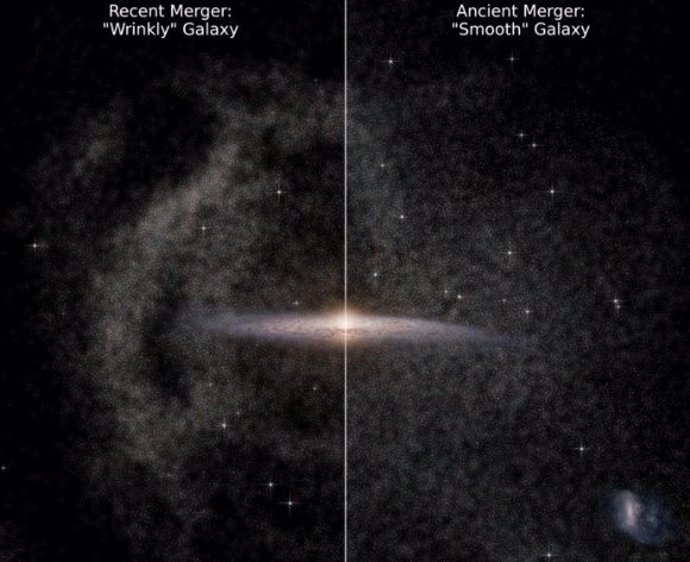On the left, the halo appears disordered and “wrinkled,” a sign that the merger occurred relatively recently. On the right, it appears smooth and uniform, a sign that the fusion instead occurred in the ancient past. – HALO STARS: ESA/GAIA/DPAC, T DONLON ET AL
June 6 () –
An examination of data from ESA’s Gaia space mission indicates that the last major collision of the Milky Way occurred billions of years later than estimated, less than 3,000 million years ago.
Gaia is mapping more than a billion stars throughout the Milky Way and beyond, tracking their motion, luminosity, temperature and composition. The new research focused on the so-called “wrinkles” of our galaxywhich formed when other galaxies collide with the Milky Way.
“We become more wrinkled as we age, but our work reveals that the opposite is true for the Milky Way. “It’s kind of a cosmic Benjamin Button, getting less wrinkled over time,” he said. it’s a statement Tom Donlon, lead author of the study and researcher at Rensselaer Polytechnic Institute.
“By watching these wrinkles dissipate over time, we can track when the Milky Way experienced its last big shock, and it turns out that this happened billions of years later than we thought.”
By comparing their observations of the wrinkles with cosmological simulations, the team was able to determine that our last significant collision with another galaxy did not, in fact, occur between eight and eleven billion years ago, as previously believed.
“For the wrinkles of the stars to be as obvious as they appear in the Gaia data, they must have joined us no less than three billion years ago, at least five billion years later than previously thought” said Hedi Jo Newberg, Donlon’s co-author and thesis advisor at Rensselaer.
“New star wrinkles form every time stars swing back and forth through the center of the Milky Way. “If they had joined us eight billion years ago, there would be so many wrinkles next to each other that we would no longer see them as separate elements.”
The collision is believed to have given rise to a large number of stars with unusual orbits. Previously, scientists dated it to between eight and eleven billion years ago in a collision called the Gaia-Sausage-Enceladus merger (GSE). In contrast, Newberg and Donlon’s findings indicate that the stars may have been the result of Virgo Radial Mergerwhich crashed into the center of the Milky Way less than three billion years ago.
















Add Comment